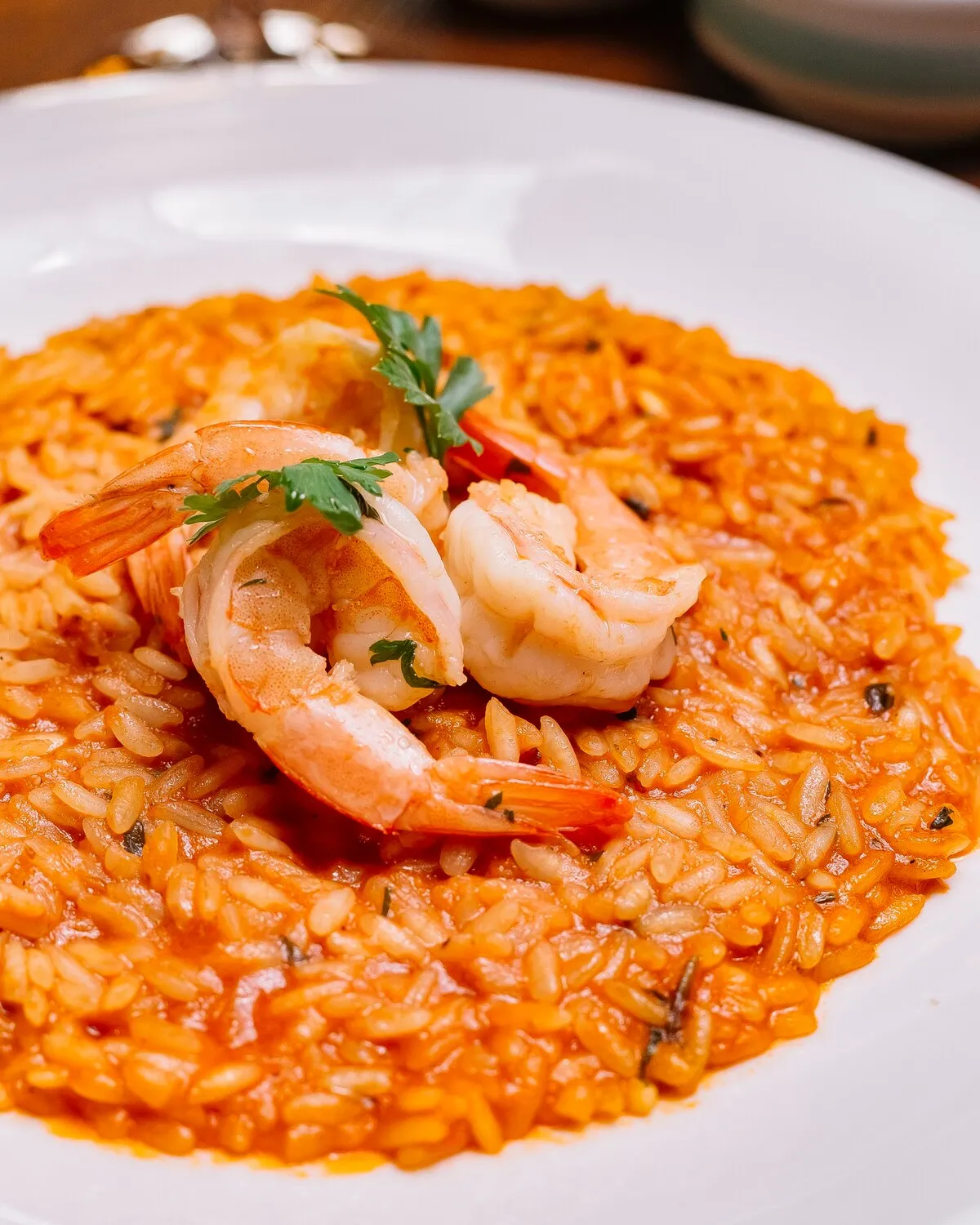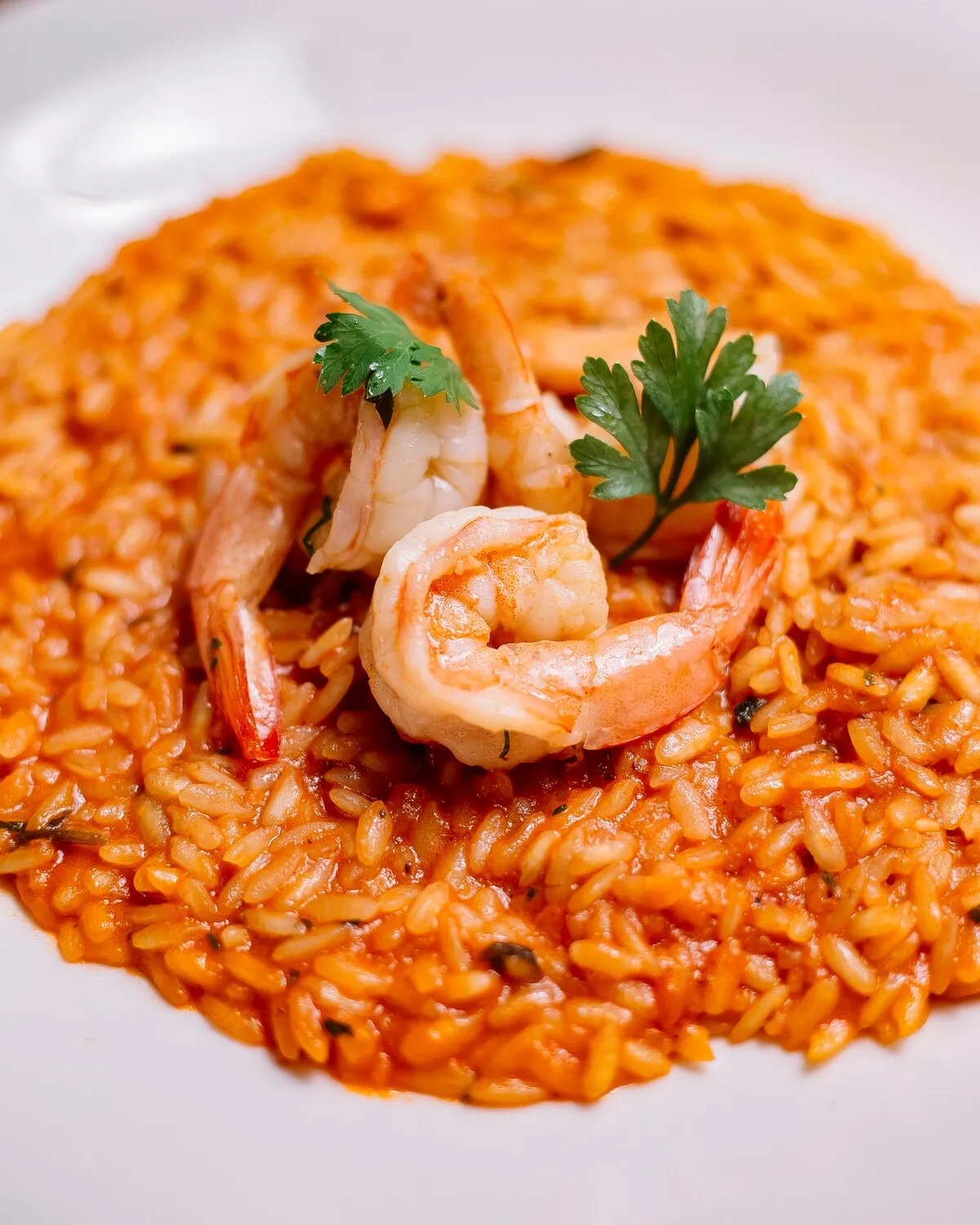
Risotto
Creamy Italian rice dish, often featuring mushrooms, seafood, or other savory ingredients. Available in different variations at Rossini.
Nutrition Facts
* The % Daily Value (DV) tells you how much a nutrient in a serving of food contributes to a daily diet. 2,000 calories a day is used for general nutrition advice.
Risotto's origins can be traced back to Northern Italy, specifically the Lombardy region. Rice cultivation was introduced to Italy via the Arabs in the Middle Ages, and it gradually became a staple in the Po Valley due to the area's suitable climate. The dish as we know it today likely developed over several centuries, evolving from simpler rice preparations to the creamy, luxurious dish it is now.
Risotto is deeply ingrained in Italian culinary culture, representing a commitment to quality ingredients, slow cooking, and convivial dining. It's often enjoyed as a first course (primo) and is a versatile dish that can be adapted to reflect seasonal ingredients and regional specialties.
Regional Variations
Each region in Italy has its own unique take on risotto. Risotto alla Milanese (with saffron) is iconic to Milan, while risotto al nero di seppia (with squid ink) is popular in Venice. These regional variations showcase the diversity of Italian cuisine.
Social Dining
Risotto is often prepared and enjoyed in a communal setting. The slow cooking process encourages conversation and shared anticipation, making it a dish that fosters connection and celebration.
Ingredient Importance
Italians value fresh, high-quality ingredients. The best risotto starts with excellent rice, flavorful broth, and fresh seasonal additions. The emphasis on ingredient sourcing highlights the respect for nature and tradition within Italian cooking.
Risotto boasts a rich, creamy, and savory profile, often enhanced by the specific ingredients used. The dish is characterized by its al dente texture and the harmonious blend of flavors from the rice, broth, and other components.
The primary flavor profile is savory, stemming from the broth (usually chicken, vegetable, or seafood), cheese (Parmesan is common), and aromatics like onion and garlic. Butter and wine (often white wine) add richness and depth. Variations incorporate diverse ingredients: mushrooms contribute earthy notes, seafood offers briny flavors, saffron imparts a distinct aroma and yellow hue, and vegetables provide freshness and sweetness. The key is the slow release of starches from the rice, which creates the creamy texture. Herbs like parsley, thyme, or rosemary are often used as a finishing touch.
Rice Choice
Use Arborio, Carnaroli, or Vialone Nano rice. These varieties are high in starch and absorb liquid well, resulting in a creamy texture. Avoid long-grain rice, which will not produce the desired result.
Broth Temperature
Keep the broth hot throughout the cooking process. Adding cold broth will lower the temperature of the rice and disrupt the starch release, leading to a less creamy risotto.
Stirring Technique
Stir the risotto frequently but not constantly. Stirring helps release the starches and prevents the rice from sticking to the bottom of the pan. However, over-stirring can make the risotto gummy.
Adding Broth Gradually
Add the broth one ladleful at a time, allowing each addition to be absorbed before adding more. This gradual addition allows the rice to cook evenly and release its starches slowly.
Explore additional Risotto dishes and restaurants
Explore RisottoDiscover top dining spots and culinary experiences in São Luís.
Explore São LuísLearn more about the food culture, restaurant scene, and culinary heritage of Brazil.
Explore Brazil
